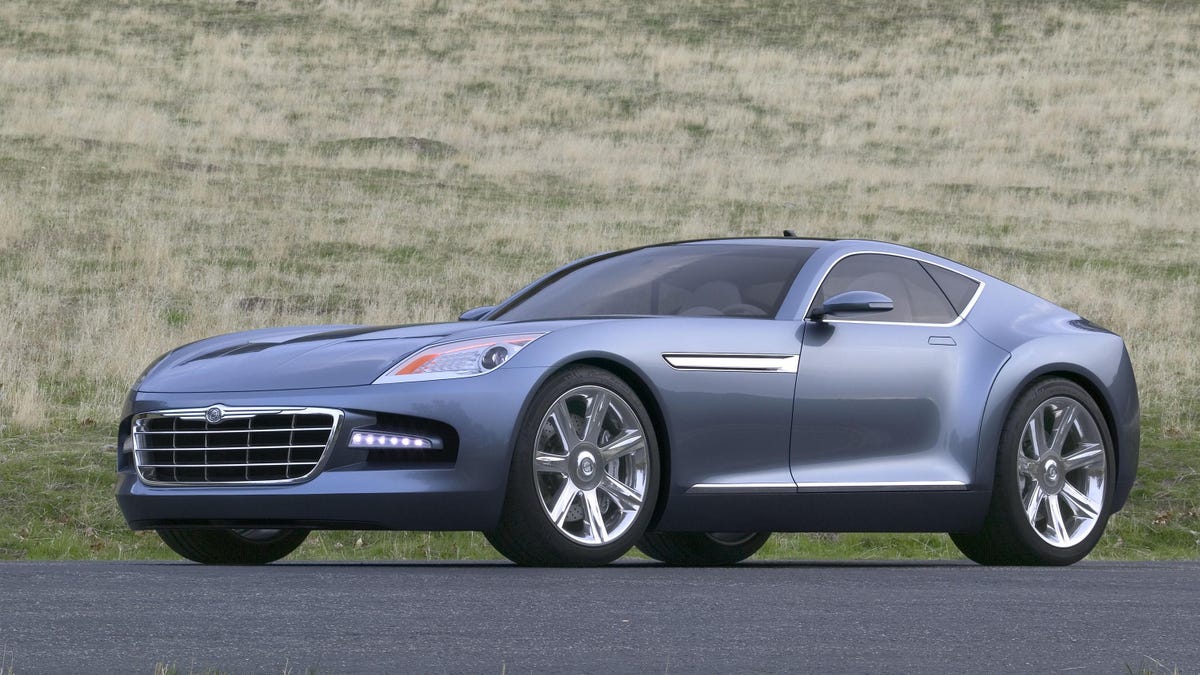We Were So Close To Getting The Chrysler Firepower

Image: Stellantis Media Archives
A luxury GT from Chrysler would have most likely been one of the best cars of the mid- to late-2000s. But it never came because Chrysler couldn’t make it work. A perfect storm of financial realities and management not wanting Chrysler to step on its other brands combined to kill it. Had the Chrysler Firepower concept actually gone into production, it might have changed Chrysler’s image forever.
1989 Dodge Viper R/T 10 ConceptImage: Stellantis Media Archives
There were times Chrysler shocked the auto industry by bringing concept cars virtually unchanged into production. The original Viper and Prowler were two of those times. And while the company was on a roll in the ‘90s with its concept car hits, many people on both the auto industry side (mainly media) and the public wanted the company to, you know, actually make some of this stuff.
Beginnings
With Daimler’s purchase of Chrysler in late 1998, the company had more access to resources and talent, leading to even more impressive concepts in the ‘00s. Some things actually had production intent, like the ill-fated ME Four-Twelve. The Firepower was another.
G/O Media may get a commission
45% Off
Shark AI Robot Vacuum
Clean it up
Features incredibly methodical cleaning, has a deep clean feature for big days, is great at getting pet hair, and even comes with a self-emptying base.
Image: Stellantis Media Archives
The Firepower rode on the same underpinnings as the third generation Viper that was produced from 2003 to 2006. Its suspension components, fuel systems, and driveline were all pulled from the Viper too. But that’s about all the Firepower shared with the super snake. Chrysler threw in a five-speed automatic transmission with Autostick from the LX cars and the 6.1-liter Hemi V8 used in early SRT8 models.
Image: Stellantis Media Archives
When it all came together, the Firepower had a curb weight of just over 3,300 pounds, with performance estimates putting its 0 to 60 mph time at 4.5 seconds with a top speed of 175 mph. Executives viewed the Firepower as a bridge between the Crossfire and ME-Four Twelve.
Build It!
How could we best encompass such strong Chrysler models as the Crossfire, which began the brand’s move toward a higher level of performance and elegance, while looking to the most extreme expression of engineering and design such as last year’s prototype, the ME Four-Twelve? Firepower uniquely bridges these two worlds.
Those were the exact words of Chrysler’s Senior VP of Design Trevor Creed. Chrysler seemed to come to a realization that if they used off-the-shelf parts they could make a case for the Firepower. Everything about it was done to keep costs down. It was even described as “an example of automotive design and engineering within the reach of Chrysler brand customers.” The press loved it, and calls came for them to build it. Chrysler needed something more than the warmed-over SLK that was the Crossfire.
Image: Stellantis Media Archives
Prototypes were built by Magna Decoma (now known as Magna International), although the exact number built isn’t known. According to one former Chrysler engineer and Allpar contributor Bob Sheaves, plans were so far ahead that Chrysler even knew how many they wanted to sell and for how much. “The goal was to sell 45,000 Firepowers per year for $65,000 each.” That would’ve placed it far enough above the 300C to be the brand’s flagship and halo model and well below the Viper’s $80,000+ MSRP at the time.
Suddenly, the Firepower and the recently introduced Dodge Challenger Concept were two of the top contenders Chrysler was considering for production. But some shuffling had to be done. Reports began to swirl that while the Firepower was nearing production approval, it would have to replace the Crossfire. Chrysler CEO Tom LaSorda was even quoted as saying “Firepower is on our agenda.” Then stranger reports came that Dodge was considering moving the Viper further upmarket as a way to create room for the Firepower and its price point. Strange considering that aside from the Firepower and its Viper underpinnings, the cars were totally different. The Viper was always America’s brutal punch you in the throat supercar, while the Firepower was billed as a powerful and handsomely designed GT.
In The Red
But reality came crashing down not long after. DaimlerChrysler was in a bad place financially in the mid ‘00s. Mercedes was looking to cut its losses and dump Chrysler, which had actually made just over €1.5 billion that year (or just over $2 billion in 2022 money). The German powers that be were looking for ways cut costs, and of course, they looked to Chrysler first. A halo GT from a brand they were looking to get rid of wasn’t a priority. And then the word came: the Firepower was officially dead.
“We’re not doing Firepower. We just couldn’t find a viable way to do it” said Trevor Creed. High production costs and toe stepping on the Viper were two of the main concerns. But how? The off-the-shelf parts were supposed to keep costs down. And the plans for Viper to move up market were supposed to keep the cars from being competitors. But that doesn’t make sense. Again, they were completely different vehicles designed for completely different buyers. Hell, the Firepower might even have been the thing to save the Viper’s Conner Ave plant from shuttering.
I contacted one of the Firepower’s original designers, Brian Nielander to get more information. He put me in contact with someone else in Stellantis’ design department. Weirdly, the company says that Firepower was never intended for production, calling it a “blue-sky study.” But we’ll never know anyway. Chrysler could’ve used the Firepower then and it could really use the Firepower now. But the brand is on life support and its doubtful we’ll ever see something like it from Chrysler again.



